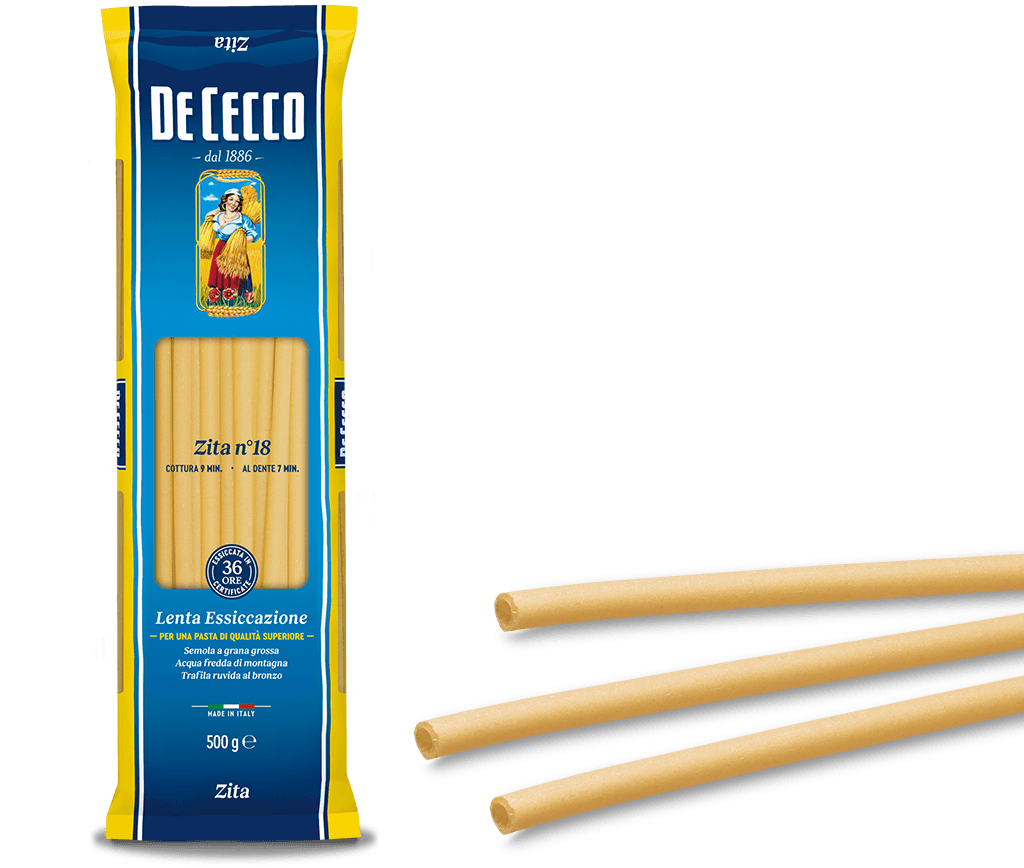Zita n° 18
In the south of Italy, the term "Zita" means the bride and as a matter of fact, this type of pasta is traditionally associated with weddings and is always served at wedding receptions.
Tradition has it that Zita , which is quite thick with a fairly rough texture, is broken by hand into uneven pieces, before being put in the saucepan to cook.
Zita can be used to prepare oven-baked recipes or plates of pasta served with dense, colourful sauces of meat of fish, with green vegetables or vegetables or strong Italian cheeses such as pecorino, provolone or caciocavallo.
Alternatively, it also excellent served with vegetable sauces prepared with tomato and the addition of peppers, aubergines and courgettes.
Available in 500g pack.s
- Cooking time: 9 min - Al dente: 7 min
Guarda il video
Our method
Attention, care, experience, quality at every stage: from our mill to your table.
You may also be interested in
Orzo n° 74
Orzo belongs to the minute pasta family to be cooked in broth.
This pasta shape was undoubtedly invented to stimulate the imagination of children who commonly eat this pasta in baby food and vegetable soups. The pasta resembles small grains and is fun and appealing.
It is especially good for preparing clear soups such as broths or consommé, enhanced with croutons or vegetables cut in julienne strips.
This pasta can be used in thick creamy or velvety soups.
Available in 500g pack.s
Find out more






